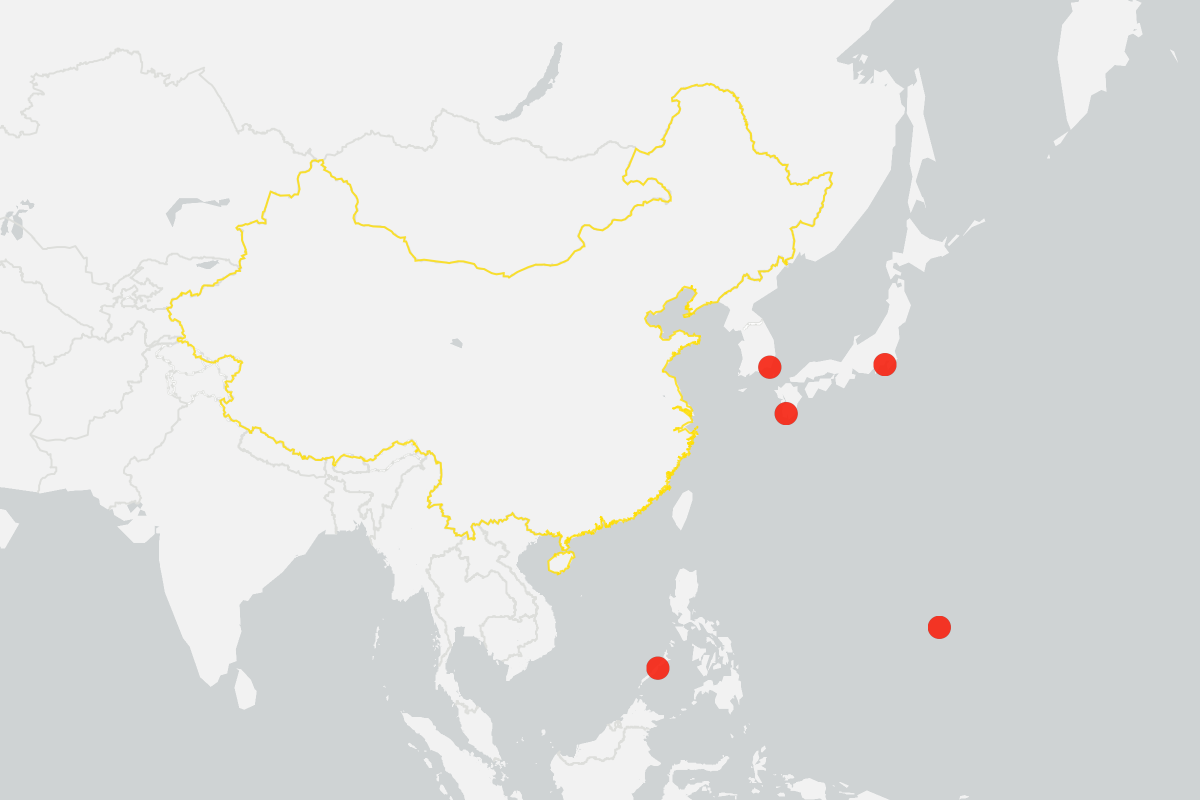A Newsweek map shows the United States conducting Coast Guard missions with allies—the Philippines, South Korea, Japan, Australia and India—in waters near China since May.
USCGC Stratton, a Legend-class national security cutter, was deployed to the western Pacific to strengthen maritime governance, the U.S. Coast Guard previously told Newsweek.
Newsweek has contacted the Chinese defense and foreign ministries for comment via email.
The U.S. Embassy in the Philippines
Why It Matters
China, which possesses both the world’s largest navy and coast guard by hull count, is expanding its presence across the Indo-Pacific through the deployment of ships—asserting its influence and sovereignty claims in disputed waters challenging the U.S. and its allies.
While Washington has established collective defense agreements with Manila, Seoul, Tokyo and Canberra, it has formed an informal Indo-Pacific grouping known as the Quadrilateral Security Dialogue, or Quad, which includes Japan, Australia and India.
Last September, the Quad leaders announced joint coast guard operations, bolstering their nations’ maritime cooperation amid China’s growing assertiveness. Beijing has accused the “exclusive club” of fueling tensions and undermining trust and cooperation in the region.
What To Know
The Stratton began its first mission in the Philippines with a port call in Puerto Princesa from May 16 to 19. Following the visit, the ship participated in a series of joint-exercises known as the Maritime Cooperative Activity, alongside Philippine vessels in nearby waters of the South China Sea.
Several countries have overlapping territorial claims in the South China Sea, often leading to standoffs and clashes between their forces—particularly between the Philippines and China.
The U.S. Coast Guard vessel then headed to Busan, South Korea, for a visit from May 29 to June 1, where it conducted bilateral and trilateral engagements with South Korean and Japanese counterparts, discussing “collaborative solutions” to regional maritime challenges.
The next two stops on the Stratton‘s deployment were in Japan, with a stopover in Yokosuka from June 9 to 13, followed by a visit to Kagoshima on June 16 for the first joint operations between the U.S., Japanese, and Philippine coast guards within Japan’s territorial waters.
Marking a milestone in #RegionalCooperation! 🇯🇵 JCG Asanagi, 🇵🇭 @coastguardph Teresa Magbanua, & 🇺🇸 USCG Stratton launched the 1st-ever maritime SAREX in Japan. The exercise affirmed shared values, operational alignment, & collective commitment to maritime stability. 🛥️🛟 #FOIP pic.twitter.com/7p34uYbaA5
— Ambassador of Japan in the Philippines (@AmbJPNinPH) June 20, 2025
The trilateral operations focused on search and rescue, reinforcing partnerships among the three coast guards. The Stratton departed Kagoshima four days later and continued its patrol.
Following its mission in Japan, the Stratton transited south to Guam, arriving on Wednesday, according to local media outlet Pacific Daily News. This marked the California-based ship’s second visit to the westernmost U.S. territory since early May.
While en route to Guam, the Quad coast guards launched the Ship Observer Mission aboard the Stratton, according to the Indian Coast Guard, with two observers each from Australia, Japan and India participating as part of an exchange program, Pacific Daily News reported.
What People Are Saying
The U.S. Coast Guard said in a press release on June 26: “National Security Cutters routinely conduct operations throughout the Pacific, where their unmatched combination of range, speed, and ability to operate in extreme weather provides the mission flexibility necessary to conduct vital strategic missions.”
India’s Defense Ministry announced on June 30: “The cross-embarkation mission [QUAD at Sea Ship Observer Mission] marks an unprecedented step in QUAD Coast Guard collaboration, enhancing joint readiness, operational coordination, and domain awareness in support of a Free, Open, Inclusive, and Rules-Based Indo-Pacific.”
What Happens Next
China continues to maintain a naval and coast guard presence across the Indo-Pacific region, particularly in the contested East China Sea and South China Sea. It remains to be seen how the U.S. will support its allies in responding to these developments.

